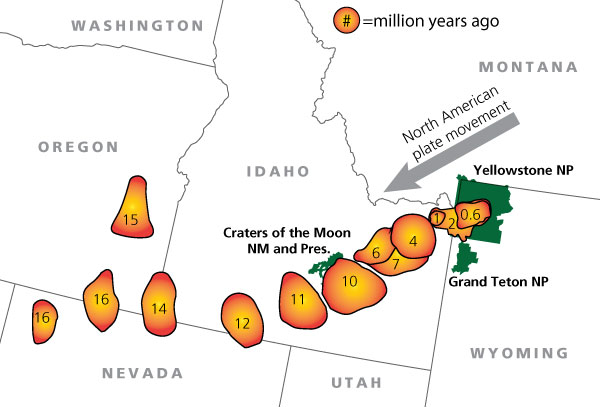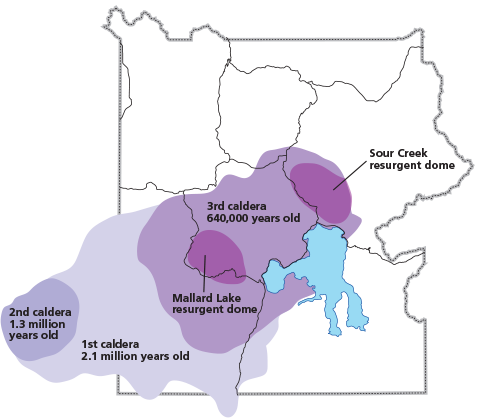
This volcano seems to be very active. I read it erupted once again
I remember once before we had a volcano eruption and I think the ash circled the globe causing temp and weather disruptions
Is this volcano any thing to think about re: changes in weather and crop production
I know we have volcano eruptions every yr but this one seems to be very active
https://www.africanews.com/2021/04/11/ash-and-smoke-rise-from-la-soufriere-volcano-on-saint-vincent/
https://www.npr.org/2021/04/12/986302206/from-bad-to-worse-la-soufriere-continues-to-erupt
https://en.wikipedia.org/wiki/La_Soufri%C3%A8re_(volcano)
La Soufrière or Soufrière Saint Vincent (French pronunciation: [sufʁjɛʁ sɛ̃ vɛ̃sɑ̃]; Vincentian: Soufra) is an active stratovolcano on the Caribbean island of Saint Vincent in Saint Vincent and the Grenadines. It is the highest peak in Saint Vincent, and has had five recorded explosive eruptions since 1718. The most recent "explosive events" commenced in April 2021.
Wayne, the ongoing eruption is rated as a VEI-4 on the volcanic explosivety index which is around what Mt. St. Helens was in 1980.
Mt St Helens did not change the weather/climate much. However, Mt. Pinatubo in 1991, was 10 times greater at a VEI-5 and DID cool global temperatures slightly for a couple of years.
The biggest volcanic explosion in human history was Mt Tambora at a VEI-6, which was 10 times Pinatubo and 100 times this current volcano. That caused "The year without a Summer" and some really extreme weather. That one started erupting in April 1815.
https://www.marketforum.com/forum/topic/66193/#67750
https://en.wikipedia.org/wiki/Volcanic_Explosivity_Index
VEI and ejecta volume correlation
The Volcanic Explosivity Index (VEI) is a relative volume correlation
Each increase of 1 on the scale, represents an increase in actual volume of 10. So the Mt. Tambora eruption in 1815 was a VEI-6. This was 10 times greater than Mt. Pinatubo in 1991, a VEI-5.
Mt. Tambora was 10 X 10 = 100 times greater than the VEI-4 eruption of Mt. St. Helens in 1980. This current volcano is close to Mount St Helens.
These volcanic cataclysms changed history and the climate
https://www.livescience.com/30507-volcanoes-biggest-history.html
Mike said:
The biggest volcanic explosion in human history was Mt Tambora at a VEI-6, which was 10 times Pinatubo and 1,000 times this current volcano.
------------------------------------------
Mike,
Excellent post as I gave you a "like". But I think you have a typo. Shouldn't the bolded be 100 instead of 1,000? Thanks in advance.
Thanks so much for catching that Larry.
It also resulted in me adding a good explanation to that scale on the page so that people can better understand it.
Larry,
I just realized why I put Tambora as 1,000 times greater than Mt. St. Helens because I was thinking of Tambora as a VEI-7.
At this site, they rated Tambora as a VEI-7, not a VEI-6 and a VEI-7 would in fact be 1,000 times greater than a VEI-4, which was Mount St. Helens.
And each volcano is not exactly X amount of ash that coincided exactly with the starting point number on the VEI scale. Tambora could have had something like 500 times the amount of volcanic ash emitted vs St. Helens and/or St. Helens could have been in between a 4 and 5.................or Tambora could have been in between a 6 and 7. The farther you go back, the less accurate the estimate is going to be.
https://www.livescience.com/30507-volcanoes-biggest-history.html
All the greatest volcanic eruptions of all occurred before human times.
This actually makes sense considering humans have not been on the planet for that long.
Some of the biggest ones were at the location now that's Yellowstone Park.....and not extremely long ago on a geological time scale:
National Park ID, MT, WY

 The location of Yellowstone's three calderas and two resurgent domes.
The location of Yellowstone's three calderas and two resurgent domes.
++++++++++++++++++++++++++++++++++++++++++
metmike: Krakatau was maybe half of Tambora in ejected material....so you can see below how the first Yellowstone eruption, ejected over 100 times the stuff that Krakatau did. Something like that today would cause widespread crop failures for numerous years with massive global cooling combined with less sun to give plants energy from photosynthesis. Only crops in the lower latitudes would have enough warmth and long enough growing seasons to be productive.

"If another catastrophic caldera-forming Yellowstone eruption were to occur, it quite likely would alter global weather patterns and have enormous effects on human activity, especially agricultural production, for one-to-two decades."
metmike: 2 decades seems like a stretch because most of the ash would settle out long before that and I would think also most of the SO2 and other gases would dissipate/be removed from natural process in the first decade. 
Regardles of how long it lasted, for the first few years, there would be world wide crop failures at the high and middle latitudes. World food production might drop over 50%. Food prices would go 10 times higher to ration the tiny supplies and many billions of people would starve to death.
Two studies agree that ancient eruptions likely played a supporting role in the mass extinction. But the devil is still in the details.
Ask someone how the dinosaurs died, and chances are they will tell you about an apocalyptically bad day 66 million years ago, when a huge asteroid slammed into Earth and triggered a nuclear winter. This event left behind distinct traces in the geologic record, as well as a vast crater off Mexico's Yucatán peninsula called Chicxulub. But since the 1980s, researchers have debated whether volcanoes in ancient India may have been an accessory to the mass extinction—or even its main driver.
Now, two independent research teams have created the best time lines of this volcanic activity ever assembled. Despite using different dating methods, their two studies—published on Thursday in the journal Science—agree in broad strokes on the timing of the ancient eruptions, helping clarify how they could have played a supporting role in wiping out non-avian dinosaurs. (Meet the dinosaurs that didn't die.)
“We agree more than we disagree, and that's a really important conclusion,” says Courtney Sprain, a postdoctoral researcher at the University of Liverpool who led one of the studies, working with a team from the University of California, Berkeley.
According to the two teams, the massive volcanoes, called the Deccan Traps, started erupting about 400,000 years before the Chicxulub impact and wrapped up about 600,000 years after the end of the Cretaceous period. At least half of the volcanoes' total erupted lava spilled out after the impact.However, the studies disagree on the eruptions' finer timing and tempo, which are crucial when assigning relative blame for the extinctions. One study claims that the Deccan Traps saw a major eruptive uptick in the hundred thousand years leading up to the impact, potentially stressing out some ecosystems before the asteroid's decisive blow. The other study, however, finds that most of volcanoes' lava erupted after the impact had occurred, implying a smaller role.
| What Killed the Dinosaurs? | |||||||
https://www.pbs.org/wgbh/evolution/extinction/dinosaurs/volcanism.html
Evidence for the Volcanism Hypothesis
Lava Flows
Immense lava flows cover nearly 200,000 square miles of the Deccan region of India, reaching depths of more than 6,500 feet in places.
Lava flows like these provide evidence of a rash of volcanic activity for at least 500,000 years leading up to the extinction of the dinosaurs.
Rare Metal
The metal iridium, which is similar to platinum, is very rare on Earth's surface but is more common in asteroids and in molten rock deep within the planet.
Some scientists think the presence of high concentrations of iridium at the geological layer associated with the dinosaur extinction could be the result of extremely large-scale volcanic activity.
Fractured Crystals
These crystals, often called "shocked quartz," show a distinctive pattern of fracturing caused by high-energy impacts or explosions.
Although geologists generally acknowledge that a comet or asteroid impact would cause these fractures, some scientists conclude that they could also be the result of volcanic eruptions.
Fossil Record
A gradual decline in the number of dinosaur species would likely mirror an equally gradual cause of their ultimate extinction. Conversely, a sudden "now you see them, now you don't" end to the dinosaurs implies a catastrophic cause. Depending on location and interpretation, the fossil record seems to say different things.
A gradual decline in the number of dinosaur species would likely mirror an equally gradual process like climate change caused by global volcanism.